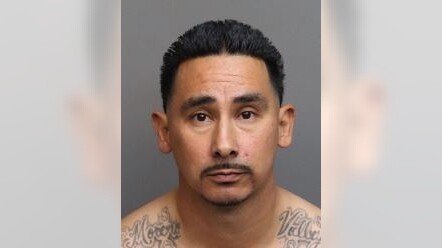Title: The Ongoing Legal Troubles of Vincent Edward Gonzales III: A Deep Dive into Recent Accusations
In the ever-evolving landscape of criminal allegations, Vincent Edward Gonzales III finds himself in the spotlight once more. Accused of shooting 15-year-old Clyvaughn Mallet, Gonzales’s past legal troubles resurface as the community grapples with the implications of such a serious charge. The gravity of these allegations adds layers to a complex narrative already marked by a previous arrest in 2007, during which no charges were filed. This article aims to dissect the recent developments, examine Gonzales’s legal history, and shed light on the community’s response to this alarming incident.
In the latest incident, authorities allege that Gonzales engaged in a violent encounter that resulted in the wounding of Clyvaughn Mallet. While details remain scarce, the implications of such an act are profound, raising questions about public safety and the judicial process. The acknowledgment of a shooting incident involving a minor not only highlights the urgent need for community conversations about violence but also reflects the pre-existing tensions within the neighborhood. As the investigation unfolds, the focus will undoubtedly turn towards understanding what led to this tragic event and how the justice system will respond.
Gonzales’s past legal woes offer a glimpse into a complex personal history. His arrest in 2007 did not result in charges, leading many to speculate on the circumstances surrounding that incident and its potential links to his current legal entanglements. The lack of prosecution in 2007 raises additional questions about the effectiveness of legal interventions in addressing violent behavior. Furthermore, the community’s concerns over Gonzales being a repeat offender highlights the broader societal issues surrounding crime and recidivism, contributing to a climate of fear and uncertainty.
The shooting of a juvenile like Clyvaughn Mallet inevitably draws attention from various stakeholders, including law enforcement, community leaders, and advocacy groups. In situations such as these, the role of local authorities in managing community safety becomes critical. Calls for a thorough investigation into the incident signify a demand for accountability, not just from Gonzales, but from the systems intended to protect the public. As investigators sift through evidence and witness testimonies, the community awaits answers that will hopefully restore a sense of security.
Responses from the community have been varied, encompassing fear, anger, and calls for justice. Friends and family of Clyvaughn Mallet have expressed their outrage over the shooting, emphasizing the need for stricter measures to prevent future acts of violence. Community leaders are urged to initiate discussions on violence prevention programs and conflict resolution strategies, underscoring the importance of proactive measures in addressing underlying issues that lead to such tragedies. The call for unity against violence reflects a community’s collective yearning for safety and support for one another during these tumultuous times.
As the case against Gonzales unfolds, it is essential to recognize the broader implications of these legal battles within the community. Each incident serves as a reminder of the fragile nature of public safety and the ongoing struggle for justice. The outcome of this case may not only shape Gonzales’s future but will also resonate throughout the community, influencing public perception of crime and the legal system. Advocating for a fair process is crucial, as the community seeks resolution and healing following such a distressing event.
In conclusion, the accusation against Vincent Edward Gonzales III sheds light on critical issues surrounding youth violence, community safety, and the complexities of the legal system. The recent allegations have rekindled discussions about protective measures, legal accountability, and community resilience. As the investigation progresses, the hope remains that it will promote a deeper understanding of the societal factors contributing to such incidents and foster a collective desire for meaningful change. The path ahead may be challenging, but it also presents an opportunity for growth and healing within the community.





